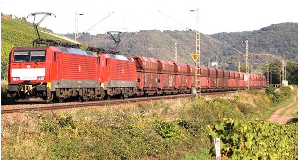
Logistics companies are
reevaluating routes through Russia as a response to the volatile situation in
the Red Sea. Germany’s
DHL reported a 40% surge in demand for the Russian rail route since container
ships began opting for the longer journey in December.
RailGate
Europe noted a 25 to 35% increase in requests, while Rail Bridge Cargo observed
a 31% rise in cargo rail traffic through Russia compared to the same period
last year.
DHL emphasized that the majority
of goods traveling from Asia to Europe via rail use the “west corridor” through
Kazakhstan into Russia and Belarus, with some traffic following the “north
corridor” directly from China into Russia east of Mongolia. Despite western export
restrictions related to Russia’s conflict in Ukraine, DHL stated that it is not
handling any traffic to or from Russia.
Rail transport is gaining traction
among shippers due to its cost-effectiveness compared to air freight and faster
delivery times than ocean transportation.
RailGate
Europe’s chief business development officer highlighted the route’s appeal,
citing a transit time between 14 and 25 days, significantly better than ocean
times.
Despite
initial concerns during the Russia-Ukraine conflict, the route has seen a
recovery in the past year, with demand for rail transport skyrocketing since
the attacks on vessels in the Red Sea at the end of 2023.